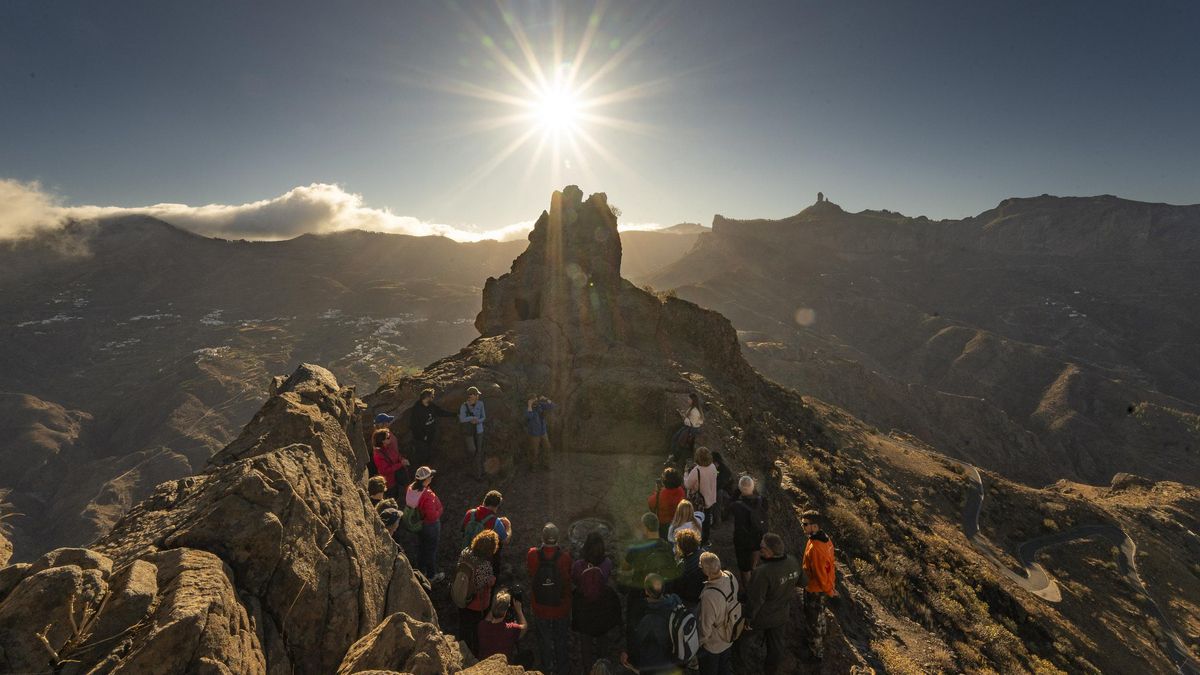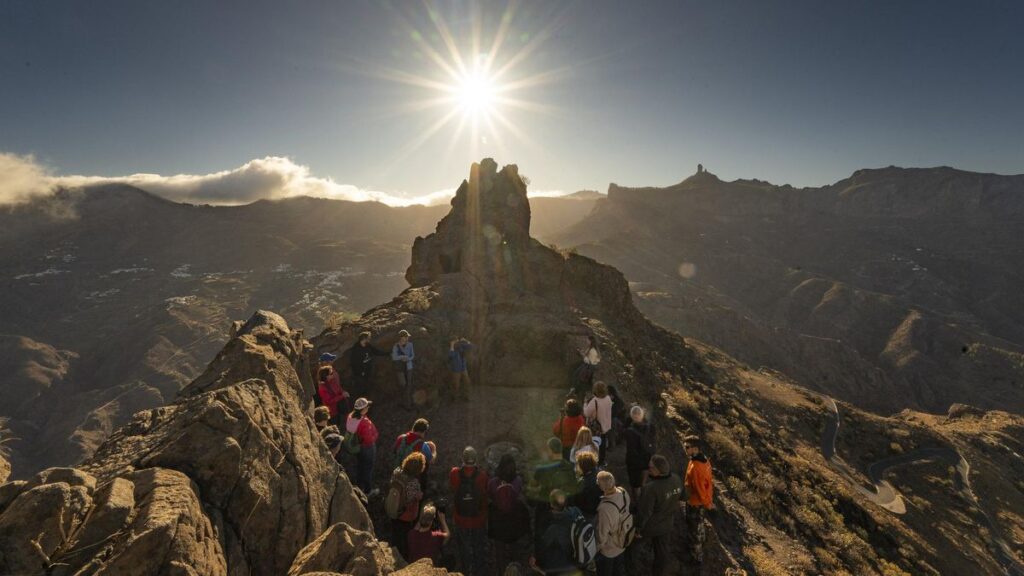An Ancient Spectacle Reborn
A group of 25 people recently relived a sensation experienced for centuries by the original inhabitants of Gran Canaria: watching the equinox sun from the ceremonial site, or almogarén, at Roque Bentayga. This extraordinary event was part of the free “Yacimientos Estrella” (Star Sites) program organized by the Island Council of Gran Canaria. For the participants, it was a chance to connect directly with the island’s deep history at one of its most sacred locations.
A Sacred Meeting Point Between Earth and Sky
“Today, together with a group of Gran Canaria residents who share an interest in our history, we lived a unique experience in one of the most sacred and spectacular enclaves of Gran Canaria: the Roque Bentayga,” said the President of the Island Council, Antonio Morales, who joined the tour organized by the Historical Heritage Service. He described the site as a meeting point for the island’s first people and emphasized that the “imposing” landmark “transports us to a way of understanding the relationship of ancient Gran Canaria society with the sky and the earth, to the Axis Mundi, that meeting place between the two spaces.”
Javier Velasco, a Historical Heritage Inspector for the Council, added that these visits aim to diversify the public’s perspective on the archaeological heritage of the ancient Canarians. “These places for observing the changing seasons provide a series of clues that are important for society. They were spaces for collective celebration, but they also offered certainty against the chaos of daily life by confirming that the cycles repeated. This provides a sense of belonging, which is the feeling we want to share with the public,” Velasco explained.
The Equinox Phenomenon at the Almogarén
The participants witnessed the first rays of the autumn equinox sun illuminate the Bentayga’s almogarén just after nine in the morning. This precise phenomenon, which occurred between the 22nd and 24th of the month, is what the ancient population of Gran Canaria observed to mark the start of the rainy season and to regulate their agricultural and livestock cycles. The almogarén is a quadrangular structure carved into the rock, complete with a basin and channels, and is a key feature of this designated Cultural Heritage site.
More Than 3,100 Participants in a Cultural Revival
Since the program was reactivated in November of last year, over 3,100 people have enjoyed this window into the island’s legacy. President Morales described these guided tours as a “primary action we carry out for the dissemination and, consequently, the protection of these values, particularly those that are part of World Heritage.” The Roque Bentayga is a magnificent example of this, allowing visitors to understand the importance of Gran Canaria’s highlands both during the pre-Hispanic settlement and in later periods.
A Landscape Steeped in History
A simple glance from the Roque Bentayga reveals a territory where ancient settlements like Acusa, Cuevas del Rey, La Solana del Pinillo, and Risco Chapín interacted, all set within the vast Caldera de Tejeda and the ravine of La Aldea. Recent research through an agreement between the Council and the University of Las Palmas de Gran Canaria (ULPGC) has revealed that Acusa and Bentayga have been populated since at least the 6th century. A second phase of studies is now focused on unraveling the complexity of the Bentayga environment and the “cultural biography” of Barranco Hondo.
Exploring Gran Canaria’s Diverse Heritage
The “Yacimientos Estrella” program is just one offering from the Historical Heritage Service. Over the past ten months, the service has also organized visits to cultural landscapes like Barranco Hondo and Maspalomas, historic centers such as Agüimes and Telde, and archaeological sites including the Barrio del Hospital. Other activities include gender-perspective tours of Vegueta, photography workshops, and family-friendly visits to places like the Jardín Canario and Confital.
Bentayga’s Rich Archaeological Tapestry
While Roque Bentayga is often known for its role as a refuge during the Castilian conquest of Gran Canaria, it is less known that it was one of the first areas on the island to be settled by the ancient Canarians. Evidence points to stable occupation from the early centuries after the change of era, linked to a peasant landscape where livestock farming was particularly important. The archaeological zone of Bentayga-Cuevas del Rey shows evidence of human occupation that likely spanned more than a millennium, explaining the rich and diverse archaeological footprint featuring natural and artificial cave dwellings (some painted), burial caves, storage areas, and rock engravings.
How to Join a Heritage Tour
The Island Council reminds citizens that the monthly program of guided tours to the island’s cultural heritage can be accessed through the website visitaspatrimonio.grancanaria.com. By registering for free on this portal, groups (minimum 10, maximum 30 people) can also request a guide for specific visits to heritage sites listed on the website, though transportation is not included. The platform also offers virtual tours through the ‘Es todo tuyo’ YouTube channel, providing more ways to discover and enjoy Gran Canaria’s unique heritage.


